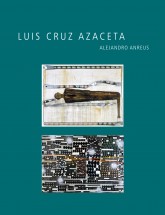Cuban American artist Luis Cruz Azaceta addresses what author Alejandro Anreus calls the “wounds and screams” of the human condition. Although Cruz Azaceta’s work is widely shown and widely collected, this is the first book-length monograph on the artist’s life and work.
Anreus traces Cruz Azaceta’s career and explores the themes that are the focus of his singular art. Anreus assesses how the Cuban diaspora, above all, has shaped the artist and how the experience of exile has found expression through starkly forceful self-portraiture in many of his works. Anreus also discusses the artist’s ongoing concern with current events. Cruz Azaceta has responded to national crises, such as the AIDS epidemic, the Oklahoma City bombing, and the devastation of New Orleans by Hurricane Katrina, with graphically powerful paintings, mixed-media pieces, and installations.
Over the past four decades Cruz Azaceta has experimented with his visual vocabulary, moving from the flat, pop style of his early canvases, through neo-expressionism, and into the abstraction of current work. His commentary on humanity, however, has not changed. His art continues to remind us that there are no easy solutions to the presence of violence and cruelty, exile and dislocation, and solitude and isolation.
To learn more about the A Ver: Revisioning Art History project, click here.


